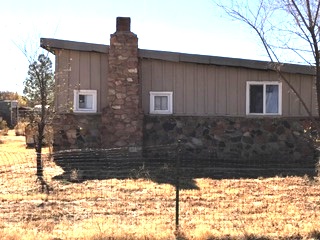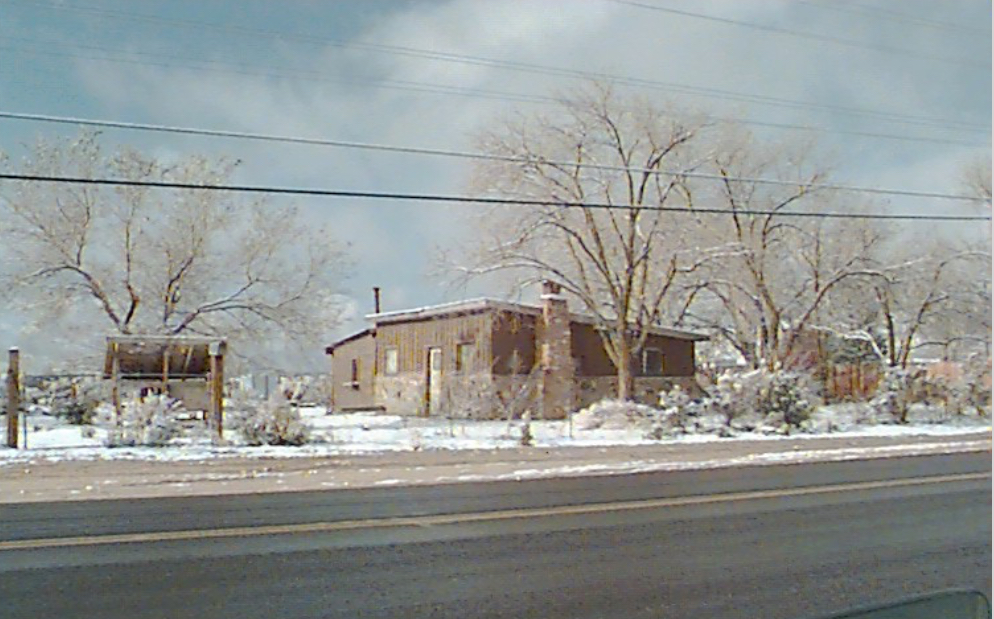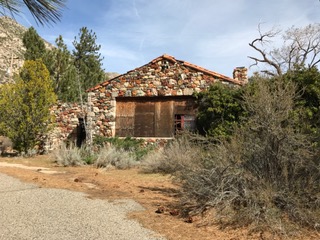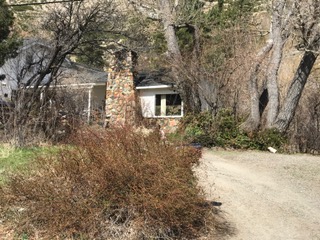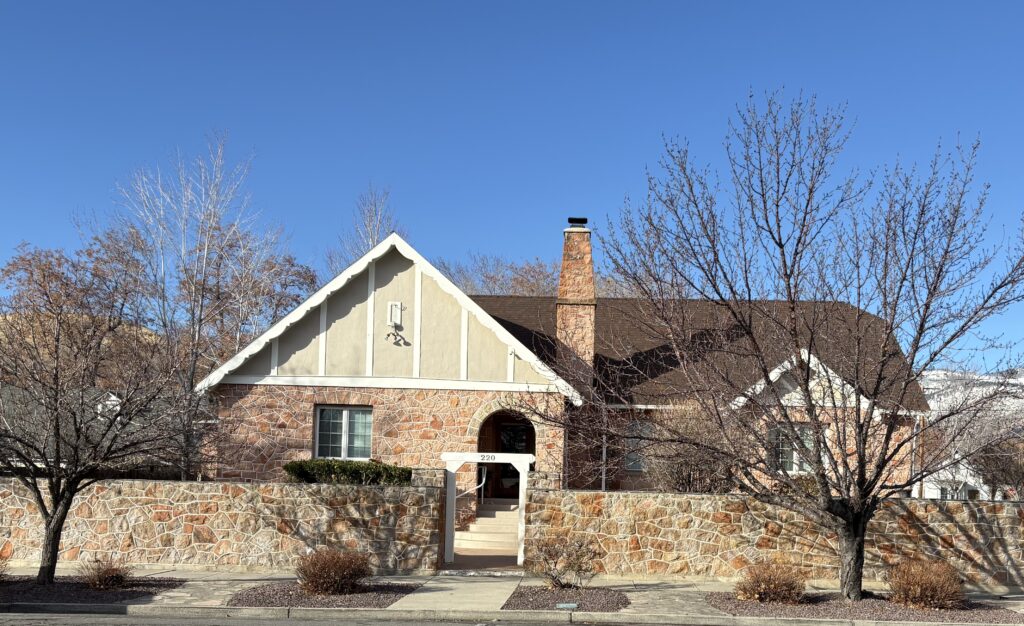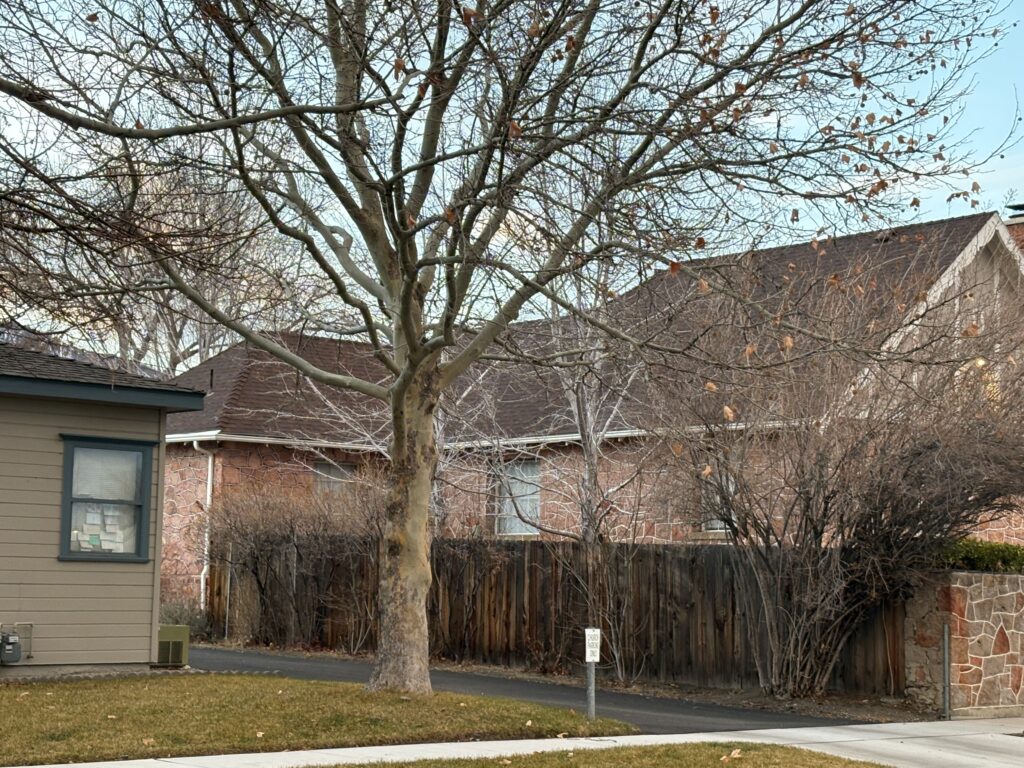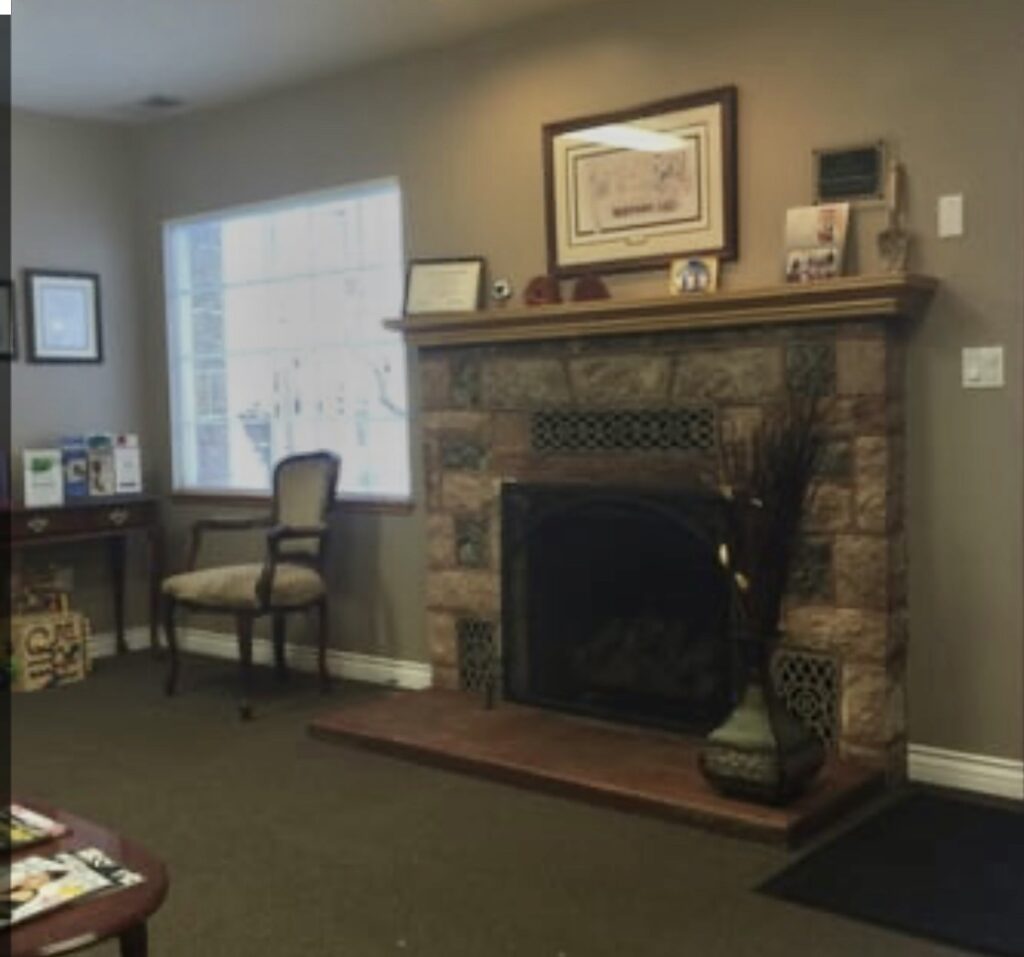Sometime in 2017, we were on a mission to buy lottery tickets. So, off to the general store in Woodfords, California we headed. After making our purchase, we noticed an overgrown, muddy road to the north of the store.
We looked at one another and thought, “What the hey? We have 4 wheel drive.” And off we went.
At the end of this road, we were rewarded with a vision – a magnificent, pink stone building. It was good sized. There was nobody around, no “No Trespassing” signs, so we were free to roam and explore.
The House – 2017
We had questions. Wash this beauty built for a large family or for a commercial endeavor? We don’t know. However, it was apparent that the building hadn’t been occupied for a number of years – windows were broken, trash was strewn about the interior and it had a general air of being unloved.
We asked around. Who owned this house? What was its history? Nobody seemed to know. Some people told us that it was home to a large, farming family. Which lead us to ask “Where’s the farm?” The house is in the middle of the forest, so unless commuting was a part of the equation, farming was not the answer, Other people told us that the building was constructed during Prohibition and was a restaurant/bar. The remote location made the bar attractive during Prohibition. Now, that made sense as we saw what appeared to be a commerical-sized oven inside.
It was/is apparent to us that this building is the work of Nevada’s Native American stonemasons. Think about it, Woodfords is only a mere 27 miles from the Stewart Indian School in Carson City. The school trained the Native American stonemasons and many remained in the area after graduating, plying their trade. Master stonemasons all!
And the Native American stonemasons were used to traveling to work sites. Think Thunderbird Lodge or the Moon Dune House at Lake Tahoe. The stonemasons camped at these worksites, only going home on the weekends. So, yes, we strongly believe this marvel to be the work of these artisans.
Cue to last week, we were on a drive and thought we’d check in on “our” house. So, off to Woodfords we went. Imagine our surprise to discover that overgrown road had been cleared. The trash picked up. There was a fence surrounding the house, it was high security. Yikes! Best of all, the house was being rehabbed – she was regaining her former glory! Yay!
The House – 2025
Unlike Nevada, the assessors of California do not post property information online. Instead, 3rd party vendors provide this information (for a fee) only if the name of the property owner is used. Sadly, we did not have that information.
We were sharing the photographs with friends. These friends have been actively working construction in Northern Nevada for decades and had worked with many of the area’s Native American stonemasons. Our friends instantly know that this gorgeous house to be the work of those geniuses.
One of our friends thought that the house might be the work of Ernest Wungnema. It strongly resembles other houses he built (see Red Rock Dental in Carson City or the Griel Ranch in Washoe Valley) However, without access to the county’s property records, we have no clue as to when the house was built or who built it.
Our friends also agreed with us that a 30 mile jaunt for work was not out of the ordinary for the Native American stonemasons.
Turns, that next to the general store, there’s a house with a chimney and a stone facade that we strongly suspect was built by the Native American stonemasons during the same time frame as the house. We’re going to scout the area for more examples of Native American workmanship.
We’d love a tour of the house once the renovation and updating is complete. And even if we aren’t invited to tour the house, we’re happy to know that this important part of both Nevada and California’s histories is being saved for future generations to enjoy.


